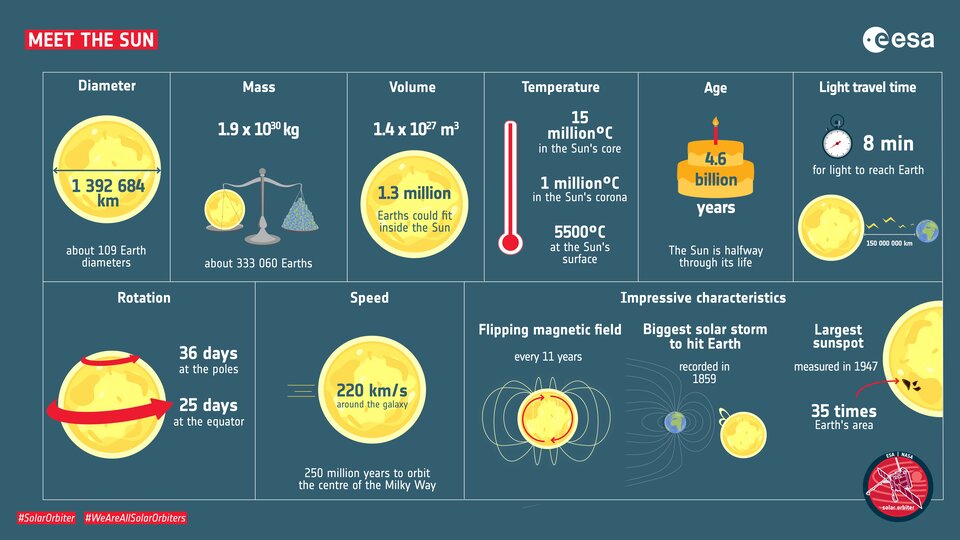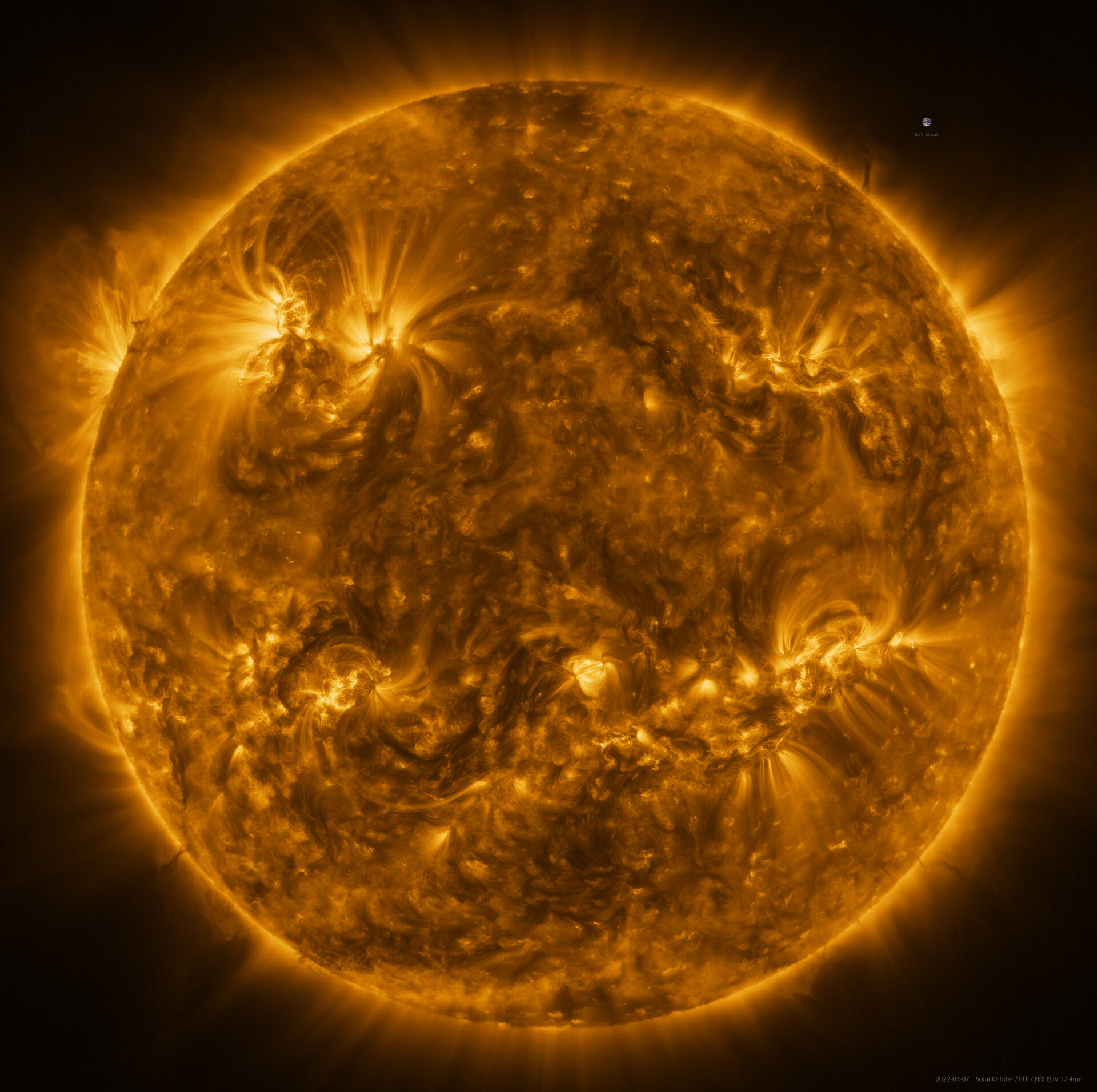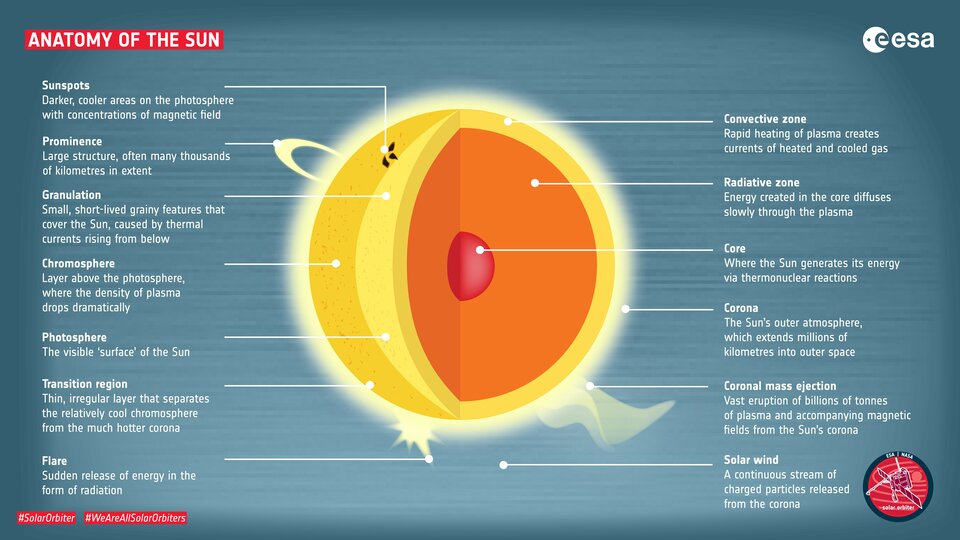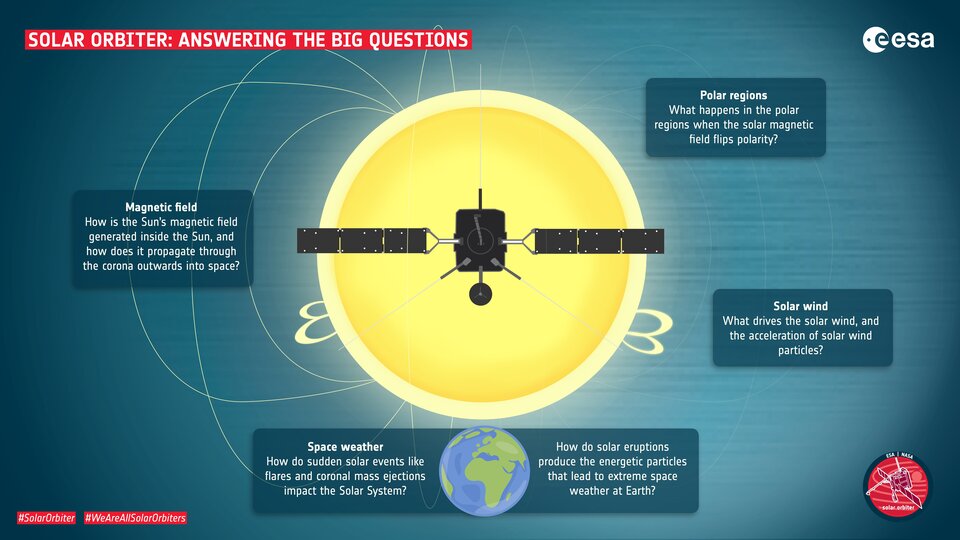The Sun
The Sun is our nearest star. Nuclear reactions deep within create energy in the form of the light and heat that we need to survive. To generate this energy, the Sun consumes four million tonnes of hydrogen fuel every second, and has done so since it was born, around 4.6 billion years ago.
The Sun is so large that it is expected to shine for another five billion years. By that time, it will have swollen into a red giant, boiling away Earth’s oceans and destroying all life on our planet. It may even expand so much that it engulfs Earth.
Meet the Sun

| Distance from Earth | 149 600 000 km |
| Diameter | 1 392 684 km (= 109 Earth diameters) |
| Rotation period at the equator | 24.6 days |
| Surface temperature | 5500 °C |
| Core temperature | 15 million °C |
| Mass (Earth = 1) | 333 060 |
| Volume (Earth = 1) | 1 300 000 |
| Surface gravity (Earth = 1) | 27.94 |
Magnetic activity
The Sun also generates energy from magnetic activity. Varying on an 11-year cycle, called the solar cycle, this activity can be roughly tracked by the number of dark spots that appear on the Sun’s surface. Magnetic explosions called solar flares often accompany these sunspots.

ESA missions
Scientists are using data from multiple ESA missions to discover more about how the Sun works and how it affects Earth. Among these is Solar Orbiter, which takes the closest ever images of the Sun to unravel the mysteries of the solar cycle. Nearing three decades of operation, SOHO studies explosions on the Sun and detects solar storms heading our way. Proba-2 is watching the Sun in ultraviolet (UV) light and Proba-3 is testing out a new way to image the Sun's faint atmosphere, called the corona. Science mission Cluster (2000–2024) and Earth observer Swarm (2013–present) have been measuring the effects of this activity on Earth’s magnetic environment; they will be followed up by Smile and NanoMagSat. And for better space weather forecasting, Vigil will watch the side of the Sun and stream a constant feed of near real-time data on potentially hazardous solar activity before it rolls into Earth's view.




